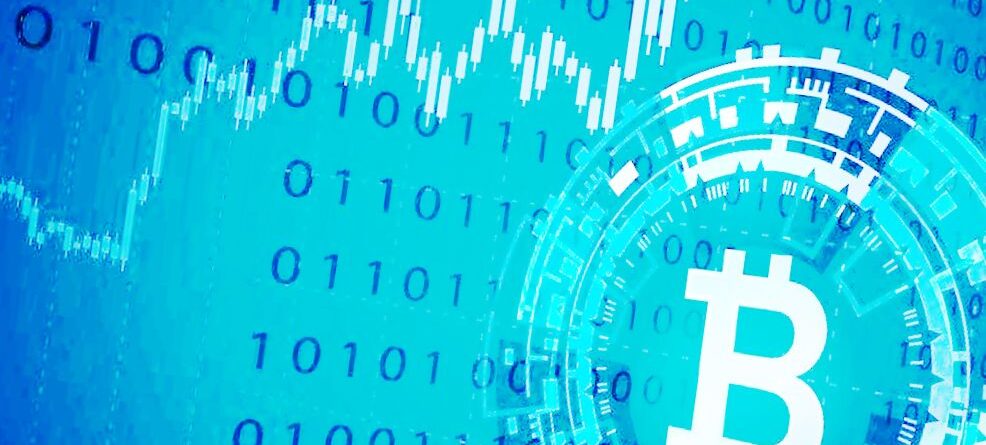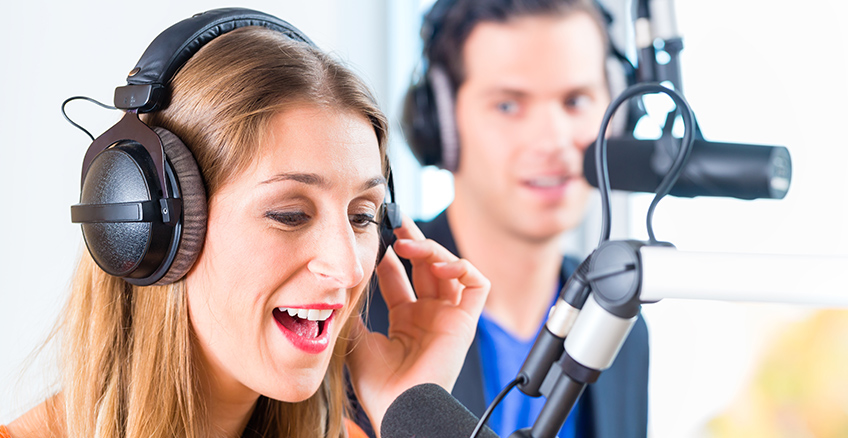Contents
Directional trading will often incorporate some aspect of Technical Analysis or “charting.” This involves predicting the direction of prices through the study of past price and volume market data. The “direction” being traded can be that of an asset itself (momentum in equity prices, for example, or the euro/U.S. dollar exchange rate) or a factor that directly affects the asset price itself . Quantitative trading in cryptos offers a slightly different challenge compared to traditional assets like stocks and currencies. Fundamental analysis in crypto coins is limited, with most factors impacting price coming from headline news. The headline news may impact price in a totally unexpected way and create volatility which the strategy is unable to handle.
Despite the fact that the trade generation can be semi- or even fully-automated, the execution mechanism can be manual, semi-manual (i.e. “one click”) or fully automated. For HFT strategies it is necessary to create a fully automated execution mechanism, which will often be tightly coupled with the trade generator . You might question why individuals and firms are keen to discuss their profitable strategies, especially when they know that others “crowding the trade” may stop the strategy from working in the long term. The reason lies in the fact that they will not often discuss the exact parameters and tuning methods that they have carried out. These optimisations are the key to turning a relatively mediocre strategy into a highly profitable one.
What is macro trader?
Macro trader. The longest-term trader who bases their trade decisions on fundamental analysis. A macro trade's holding period can last anywhere from around six months to multiple years.
More fully automated markets such as NASDAQ, Direct Edge and BATS in the US, have gained market share from less automated markets such as the NYSE. Economies of scale in electronic trading have contributed to lowering commissions and trade processing fees, and contributed to international mergers and consolidation of financial exchanges. Financial market news is now being formatted by firms such as Need To Know News, Thomson Reuters, Dow Jones, and Bloomberg, to be read and traded on via algorithms. The success of these strategies is usually measured by comparing the average price at which the entire order was executed with the average price achieved through a benchmark execution for the same duration.
To achieve accurate backtesting results, the historical data must be of high quality, just like the software platform that is utilised. A computerized quantitative analysis reveals specific patterns in the data. Quantitative traders apply this same process to the financial market to make trading decisions. Once a strategy has been identified, it is necessary to obtain the historical data through which to carry out testing and, perhaps, refinement.
Subscribe to our newsletter
Quantitative finance uses mathematical models and extensive data analysis in finance in order to apply this to the financial markets. By investigating securities, quantitative analysis can help to identify undervalued equities or bonds, for example, to predict future possibilities within trading. Arbitrage is not simply the act of buying a product in one market and selling it in another for a higher price at some spectre ai later time. The long and short transactions should ideally occur simultaneously to minimize the exposure to market risk, or the risk that prices may change on one market before both transactions are complete. Missing one of the legs of the trade is called ‘execution risk’ or more specifically ‘leg-in and leg-out risk’. In the simplest example, any good sold in one market should sell for the same price in another.

Historical price, volume, and correlation with other assets are some of the more common data inputs used in quantitative analysis as the main inputs to mathematical models. However, quantitative trading is becoming more commonly used by individual investors. The final piece to the quantitative trading puzzle is the process of risk management.
Several developments in the 70s and 80s helped quant become more mainstream. The designated order turnaround system enabled the New York Stock Exchange to take orders electronically for the first time, and the first Bloomberg terminals provided real-time market data to traders. Many use models to identify larger trades on a less regular basis, as part of a longer-term strategy.
Directional Strategies
Having social media foot traffic data (such as Foursquare’s check-in data) around Restaurant X’s outlets allows traders to predict Restaurant X’s sales figures. As we mentioned in the post on portfolio risk, any investment portfolio is vulnerable to a range of different risks…. An award winning system developer explains how to create, test, and implement a profitable trading systemTraders have lo … “Award-winning trader Kevin Davey explains how he evolved from a discretionary to a systems trader and began generating … Market volatility has been at record levels in recent months, leaving every trader and investor to ask the same question … Experience in the fields of data analysis, data mining, data researching and sectors based on automation can be advantageous.
These are particularly popular in the forex market as they can be set to run 24-hours a day. AI trading is a type of trading that uses artificial intelligence to make decisions. The biggest difference between these two types of trading is that AI traders rely on computers to make decisions, while quant traders use mathematical models. Quantitative trading or quant trading is a trading style based upon quantitative analysis. Quantitative analysis in trading relies on mathematical modelling and computer algorithms to identify trading opportunities.
While they overlap each other, these are two separate techniques that shouldn’t be confused. Every trading system must have an execution element, which is how generated trade signals will be placed in the market. Execution can be manual ; semi-manual (one-click trading prompt); and automated . The key considerations for execution include trading costs , slippage and broker interface.
This phenomenon is not unique to the stock market, and has also been detected with editing bots on Wikipedia. The term algorithmic trading is often used synonymously with automated trading system. These encompass a variety of trading strategies, some of which are based on formulas and results from mathematical finance, and often rely on specialized software. Directional trading strategies, meanwhile, typically build on trend-following or other pattern-based paths suggestive of upward or downward momentum for a security’ price.
Systematic Trading: A unique new method for designing trading and investing systems
Technological advances in finance, particularly those relating to algorithmic trading, has increased financial speed, connectivity, reach, and complexity while simultaneously reducing its humanity. Computers running software based on complex algorithms have replaced humans in many functions in the financial industry. Finance is essentially becoming an industry where machines and humans share the dominant roles – transforming modern finance into what one scholar has called, “cyborg finance”. Strategies designed to generate alpha are considered market timing strategies. These types of strategies are designed using a methodology that includes backtesting, forward testing and live testing. Market timing algorithms will typically use technical indicators such as moving averages but can also include pattern recognition logic implemented using finite-state machines.
What are quantitative trading strategies?
Quantitative trading consists of trading strategies based on quantitative analysis, which rely on mathematical computations and number crunching to identify trading opportunities. Price and volume are two of the more common data inputs used in quantitative analysis as the main inputs to mathematical models.
Traders may, for example, find that the price of wheat is lower in agricultural regions than in cities, purchase the good, and transport it to another region to sell at a higher price. This type of price arbitrage is the most common, but this simple example ignores the cost of transport, storage, risk, and other factors. Where securities are traded on more than one exchange, arbitrage occurs by simultaneously buying in one and selling on the other. Such simultaneous execution, if perfect substitutes are involved, minimizes capital requirements, but in practice never creates a “self-financing” position, as many sources incorrectly assume following the theory.
At the time, it was the second largest point swing, 1,010.14 points, and the biggest one-day point decline, 998.5 points, on an intraday basis in Dow Jones Industrial Average history. On August 1, 2012 Knight Capital Group experienced a technology issue in their automated trading system, causing a loss of $440 million. Market making involves placing a limit order to sell above the current market price or a buy limit order below the current price on a regular and continuous basis to capture the bid-ask spread. Automated Trading Desk, which was bought by Citigroup in July 2007, has been an active market maker, accounting for about 6% of total volume on both NASDAQ and the New York Stock Exchange. “Now it’s an arms race,” said Andrew Lo, director of the Massachusetts Institute of Technology’s Laboratory for Financial Engineering. “Everyone is building more sophisticated algorithms, and the more competition exists, the smaller the profits.”
If you are just analysing the price of one asset without any information from other assets or external variables, it is difficult to be profitable in the long run. As can be seen, quantitative trading is an extremely complex, albeit very interesting, area of quantitative finance. I have literally scratched the surface of the topic in this article and it is already getting rather long! Whole books and papers have been written about issues which I have only given a sentence or two towards. For that reason, before applying for quantitative fund trading jobs, it is necessary to carry out a significant amount of groundwork study. At the very least you will need an extensive background in statistics and econometrics, with a lot of experience in implementation, via a programming language such as MATLAB, Python or R.
A special class of these algorithms attempts to detect algorithmic or iceberg orders on the other side (i.e. if you are trying to buy, the algorithm will try to detect orders for the sell side). When the current market price is less than the average price, the stock is considered attractive for purchase, with the expectation that the price will rise. When the current market price is above the average price, the market price is expected to fall. In other words, deviations from the average price are expected to revert to the average.
Quantitative Trading FAQ
If your own capital is on the line, wouldn’t you sleep better at night knowing that you have fully tested your system and are aware of its pitfalls and particular issues? Outsourcing this to a vendor, while potentially saving time in the short term, could be extremely expensive in the long-term. They range from calling up your broker on the telephone right through to a fully-automated high-performance Application Programming Interface . Ideally you want to automate the execution of your trades as much as possible. This frees you up to concentrate on further research, as well as allow you to run multiple strategies or even strategies of higher frequency .
It includes technology risk, such as servers co-located at the exchange suddenly developing a hard disk malfunction. It includes brokerage risk, such as the broker becoming bankrupt (not as crazy as it sounds, given the recent scare with MF Global!). In short it covers nearly everything that could possibly interfere with the trading implementation, of which there are many sources.
Like market-making strategies, statistical arbitrage can be applied in all asset classes. Mean reversion is a mathematical methodology sometimes used for stock investing, but it can be applied to other processes. In general terms the idea is that both a stock’s high and low prices are temporary, and that a stock’s price tends to have an average price over traderprof time. An example of a mean-reverting process is the Ornstein-Uhlenbeck stochastic equation. Computerization of the order flow in financial markets began in the early 1970s, when the New York Stock Exchange introduced the “designated order turnaround” system . Both systems allowed for the routing of orders electronically to the proper trading post.
This type of trading was first developed by floor traders on the Chicago Mercantile Exchange in the 1970s. They used simple mathematical models to predict future price movements and make profitable trades. However, it wasn’t until the 1990s that quant trading really took off. This was thanks to the development of computerized trading systems, which made it possible to execute complex trades quickly and efficiently.

Decide on which data providers to use or counterparties to trade with, implement your own workflow or trading logic and seamlessly embed our trading platform into your existing technology stack. Trend following strategies will make use of mathematical formulas that identify a trend. The equations can be as simple as a close above the 50-period average equals a buy signal. The risks of loss from investing in CFDs can be substantial and the value of your investments may fluctuate.
They must filter market data to work into their software programming so that there is the lowest latency and highest liquidity at the time for placing stop-losses and/or taking profits. With high volatility in these umarkets markets, this becomes a complex and potentially nerve-wracking endeavor, where a small mistake can lead to a large loss. Absolute frequency data play into the development of the trader’s pre-programmed instructions.
The industry standard by which optimal capital allocation and leverage of the strategies are related is called the Kelly criterion. Since this is an introductory article, I won’t dwell on its calculation. The Kelly criterion makes some assumptions about the statistical nature of returns, which do not often hold true in financial markets, so traders are often conservative when it comes to the implementation. When backtesting a system one must be able to quantify how well it is performing. The “industry standard” metrics for quantitative strategies are the maximum drawdown and the Sharpe Ratio.
At times, the execution price is also compared with the price of the instrument at the time of placing the order. Managed Volatility Strategies have gained in popularity in recent years due to the recent instability of both stock and bond markets. When it comes to crypto arbitrage trading, AlgoTrader’s advanced infrastructure is ideal as it lets us test and execute our quantitative strategies easily and connects to global liquidity venues. Connect to the largest centralised and decentralised crypto trading venues, traditional asset exchanges and market data providers. Mean reversion strategies attempt to determine when the market will reverse its current price direction.
Who invented quant trading?
The algorithm will automatically buy shares throughout the day to keep the average price in line with the market’s average price. TWAP is similar but uses the market price at regular intervals to calculate the average price. These algorithms can also be set to trade a certain percentage of the total market volume. Some strategies might be designed to take advantage of short-term market movements, while others might aim to capture longer-term trends. The students will learn the tools and common methodology used in research and devel-opment of quantitative trading strategies. “Enter algorithmic trading systems race or lose returns, report warns”.
In the 1980s, program trading became widely used in trading between the S&P 500 equity and futures markets in a strategy known as index arbitrage. Global MacroFocus on macroeconomic environment, often concentrates on currencies or major interest-rates moves.Emerging MarketsInvests in the debt or equity of emerging markets. Quant trading strategies that are typically developed in high volume markets such as EUR/USD may not work as well in lower liquidity environments. Low liquidity is a feature of various crypto markets so the results you get from a strategy that worked fine in a high volume environment may not work as well for some crypto coins.
Traders can use a blend of both complex fundamental and technical analysis variables, resulting in an efficient and standardised method to pick assets. Quant trading is a trading style that is increasingly becoming adopted by individual traders. Read on to discover what quant trading is, how it works and how to get started. We will cover examples of quantitative trading and many popular quantitative strategies. Automated trading must be operated under automated controls, since manual interventions are too slow or late for real-time trading in the scale of micro- or milli-seconds.
Live testing is the final stage of development and requires the developer to compare actual live trades with both the backtested and forward tested models. Metrics compared include percent profitable, profit factor, maximum drawdown and average gain per trade. Backtesting the algorithm is typically the first stage and involves simulating the hypothetical trades through an in-sample data period.
How does quantitative trading work?
It is never too late to start learning about and using quantitative trading strategies. You can learn about the different types of quantitative trading strategies and how to use them. Then, you’ll need to test your strategies with a demo account before putting any real money on the line. There are a number of platforms online available to help you get up and be successful. A quant trader uses mathematical models to make predictions about future market movements.
Optimization is performed in order to determine the most optimal inputs. Scalping is liquidity provision by non-traditional market makers, whereby traders attempt to earn the bid-ask spread. This procedure allows for profit for so long as price moves are less than this spread and normally involves establishing and liquidating a position quickly, usually within minutes or less.











